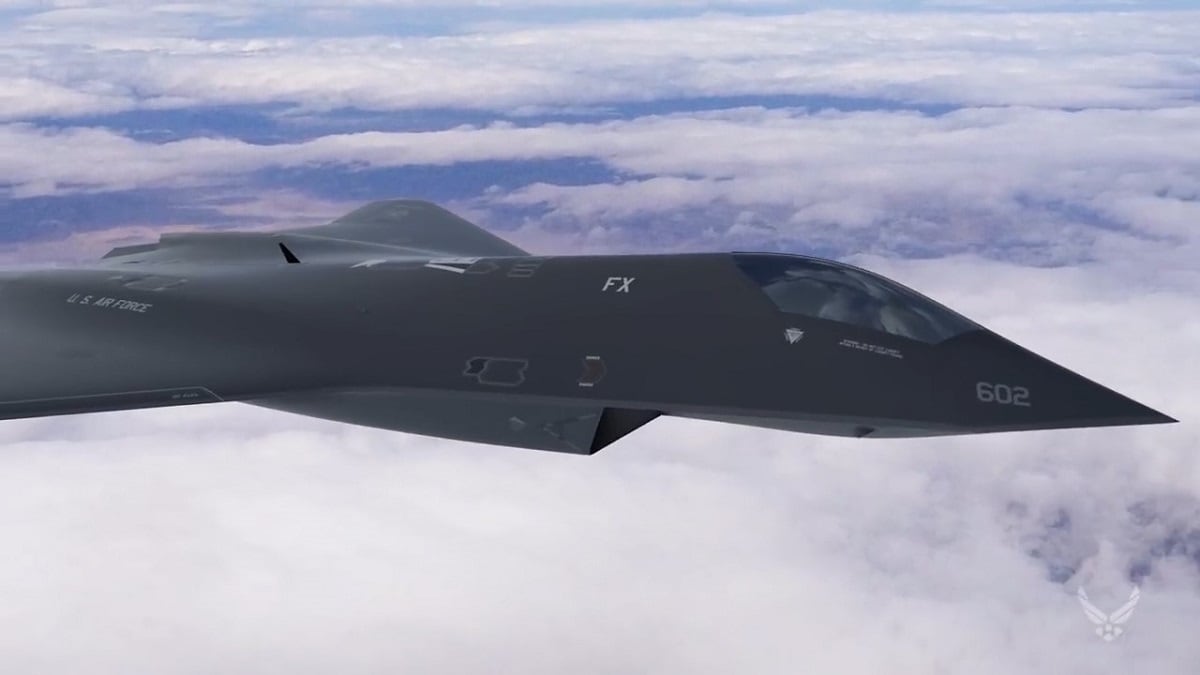WASHINGTON — The House Armed Services Committee wants to limit the amount of money the Air Force and Navy get for their respective sixth-generation fighter programs until it gets some answers.
The Navy and Air Force are leading separate efforts to develop a follow-on fighter jet to the F-35, with both services calling their programs “Next Generation Air Dominance.” Both projects are in the early stages of development, with the services hoping to ramp up activities this year.
But HASC intends to fence off 85 percent of the fiscal 2021 funding requested for the NGAD until the committee receives an independent review performed by the Pentagon’s director of cost assessment and program evaluation, according to the Tactical Air and Land Forces Subcommittee’s markup of the FY21 defense policy bill.
RELATED

A committee aide told reporters on Monday that the stipulations are “nothing out of the ordinary” and are meant to allow lawmakers to gain further insight into the programs, not to permanently strip funding from the efforts.
“When they field their capabilities, we just want to make sure that they’ve thought them through, that the department has determined that they are affordable and that anything else that is already in the budget into the future that’s high priority as well is not going to get pushed out unintentionally if they have unexpected cost growth or run into problematic issues when they field the capabilities,” the aide said.
How’s the Air Force effort going?
Earlier this month, Air Force acquisition executive Will Roper said the service is on track to finalize a business case for its NGAD program this summer.
The Air Force envisions NGAD as a family of systems that could include aircraft, drones and other advanced technologies. But when it comes to developing new advanced aircraft, Roper wants to pursue a new strategy he calls the “Digital Century Series” that would have multiple companies continuously developing new jets and competing against each other for small-batch contracts.
The business case, which is being put together by the program executive office for advanced aircraft, will explore whether the Digital Century Series idea is technically feasible, how the development and procurement process should be structured, and whether it would be cheaper than traditional contracting methods.
“That is going to really help us, I hope, because we’ll show that data and argue that it is not just better from a ‘competing with China and lethality’ standpoint. It’s just better from a business standpoint,” Roper said. “If it breaks even or is less [than traditional methods], I will be exceptionally happy. If it’s more expensive — and I hope not exceptionally more — then we’re going to have to argue” on behalf of the program.
The Air Force has asked for $1 billion for its NGAD program for FY21. It received $905 million for the program in FY20.
How’s the Navy’s effort faring?
The Navy’s NGAD program, also known as F/A-XX, is more mysterious.
In its FY21 budget rollout this year, the service announced it would curtail its Super Hornet buy, purchasing a final 24 F/A-18E/Fs and then using the savings from a planned 36 jet buy from FY22 to FY24 to invest in its own future fighter.
Little is known about the Navy’s requirements. The service completed an analysis of alternatives in June 2019, as well as broad requirements and guidance for a concept of operations.
The effort is now in the concept development phase, during which defense companies explore ideas “that balance advanced air dominance capabilities and long-term affordability/sustainment,” Navy spokesman Capt. Danny Hernandez told Defense News earlier this month.
Congress has signaled that it may not be willing to allow the Navy to stop buying Super Hornets in future years. HASC inserted language into the FY21 defense policy bill urging the Navy to continue buying new Super Hornets, warning the service that next-generation fighter procurement does not always proceed according to plans.
“The committee recalls the Navy curtailed F/A-18 procurement approximately 10 years ago with aspirational goals to maintain strike-fighter inventory levels with planned procurement of F-35C,” the committee said. “That plan was not realized due to F-35 program execution and subsequently required the Navy to procure additional F/A-18E/F aircraft to reduce operational risk. The committee expects a similar outcome may occur with the Navy’s current plan for FA-XX due to affordability and technological challenges.”
The bill also directs the chairman of the Joint Chiefs of Staff and the Defense Department’s inspector general to provide more information on the operational risk incurred by not buying additional Super Hornets, as well as F/A-18 squadron adherence to maintenance practices.
Valerie Insinna is Defense News' air warfare reporter. She previously worked the Navy/congressional beats for Defense Daily, which followed almost three years as a staff writer for National Defense Magazine. Prior to that, she worked as an editorial assistant for the Tokyo Shimbun’s Washington bureau.






